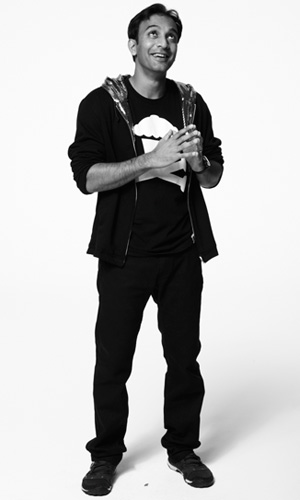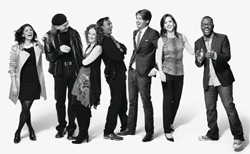Our profile of DJ Patil, Data Scientist at Greylock Partners. His career includes being a researcher at Los Alamos, a Defense Department fellow, a virtual librarian for Iraq, a web-security architect for eBay, and head of a data team at LinkedIn, where his team created "People You May Know."
@font-face { font-family: 'FCKaiserCondWebRegular'; src: url('/sites/all/themes/fc_v1/scripts/mod2011/fckaiser-cond-web-regular-webfont.eot'); src: url('/sites/all/themes/fc_v1/scripts/mod2011/fckaiser-cond-web-regular-webfont.eot?#iefix') format('embedded-opentype'), url('/sites/all/themes/fc_v1/scripts/mod2011/fckaiser-cond-web-regular-webfont.woff') format('woff'), url('/sites/all/themes/fc_v1/scripts/mod2011/fckaiser-cond-web-regular-webfont.ttf') format('truetype'), url('/sites/all/themes/fc_v1/scripts/mod2011/fckaiser-cond-web-regular-webfont.svg# FCKaiserCondWebRegular') format('svg'); font-weight: normal; font-style: normal; }
.kaiser, .kaiser a {font-family: 'FCKaiserCondWebRegular', Helvetica, sans-serif !important; font-weight: normal; letter-spacing: 1px; line-height:1; font-size:40px!important;color:#333!important; text-decoration:underline;}
.kaiser a:hover {color:#666!important;}
.kaiser {text-decoration:none;font-size:30px!important;}
.sidebox {float:right;border:1px solid #e6e6e6;background-color:#fafafa!important;width:200px;padding:5px;margin:0px 0px 10px 10px;}
.sidebox a {color:#e80681;font-weight:bold;}
.sidebox p {font-size:13px;}
.bottombox {background:#f2f2f2;border:1px solid #d8d8d8;padding:15px;}
.bottombox img {display:inline-block;vertical-align:middle;width:50px;height:50px;padding:6px;}
.bottombox a {display:inline-block;vertical-align:middle;width:70px;font-size:12px;line-height:1.2em; color:#e8007e;font-weight:bold;}
 Photo by Brooke Nipar
Photo by Brooke Nipar
DJ Patil pulls a two-foot-long metal bar from his backpack. The contraption, which he calls a double pendulum, is hinged in the middle, so it can fold in on itself. Another hinge on one end is attached to a clamp, which he secures to the edge of a table. "Now," he says, holding the bar vertically, from the top, "see if you can predict where this end will go." Then he releases it, and the bar begins to swing wildly, circling the spot where it is attached to the table, while also circling in on itself. There is no pattern, no way to predict where it will end up. While it spins and twists, with more velocity than I'd have imagined, Patil talks to me about chaos theory. "The important insight," he notes, "is identifying when things are chaotic and when they're not."
In high school, Patil got kicked out of math class for being disruptive. He graduated only by convincing a school administrator to change his failing grade in chemistry. He went to junior college because his girlfriend was going, and signed up for a calculus class because she had. He took so long doing his homework, his girlfriend would complain. "It's not like I'm going to become a mathematician," he told her.
Patil, 37, is now an expert in chaos theory, among other mathematical disciplines. He has applied computational science to help the Defense Department with threat assessment and bioweapons containment; he worked for eBay on web security and payment fraud; he was chief scientist at LinkedIn, before joining venture capital firm Greylock Partners. But Patil first made a name for himself as a researcher on weather patterns at the University of Maryland: "There are some times," Patil explains, "when you can predict weather well for the next 15 days. Other times, you can only really forecast a couple of days. Sometimes you can't predict the next two hours."
The business climate, it turns out, is a lot like the weather. And in recent years, predicting what will happen next has gotten exponentially harder. Patil's own life is a reflection of this reality. He has worked in academia, in government, at big public companies, and at startups; he is a technologist and a businessman; a teacher and a diplomat. He is none of those things and all of them, and who knows what he will be or do next. Certainly not him. "That doesn't bother me," he says. "I'll find something."
Meet The Rest Of Generation FluxOther Flux-ers recommended by DJ Patil.
Alex Dehgan Currently Sci and Tech Advisor to Administrator of USAID. LinkedIn
Allen Blue Co-founder of LinkedIn @allenb
Ellen Levy Silicon Valley Innovation, Social Networking and Technology Executive @ellenlevy
Eve Blossom Designer, architect and founder of Lulan Artisans @eveblossom
Joi Ito Director, MIT MEdia Lab @joi
Tyler Bell Director of Product at Factual @twbell
Surya Yalamanchili Product, Marketing, and Operations @suryasays
Nancy Lublin CEO of Do Something and Founder of Dress for Success @nancylublin
He recalls how he learned to master math: "I was always good with computers, fast at coding; I hacked into my school's grading system. But when I started taking calculus in junior college, I realized, I don't know any of this. I felt embarrassingly stupid. So I said, 'Okay, I can either be stupid or I can change.' So I went to the Cupertino public library and took out all the high school math books I could find, and I had to self-teach the basic principles. And I fell in love with it. It was so different from other math classes I'd taken, because it explained why the world works. You could put it into computer programs, and it would make it real."
After two years at DeAnza Community College, Patil transferred to University of California at San Diego. He still felt behind in math, certainly wasn't at the top of his class in terms of grades, but he helped professors with research--about how sand forms, and why the sardine population was collapsing--and he graduated on schedule with a math degree. He considered oceanography as a discipline, but chose instead to study under Jim Yorke, one of the pioneers of chaos theory, at the University of Maryland.
For his research, Patil says, "I would take over the computers at night." His research topic: "How do you understand the nonlinear aspects of the weather? I had to clean and process so much data. I would go to bed at 5 p.m. and get up at midnight, when the computers weren't being used. It was hell."
Patil wanted a spot as a professor, but he knew he'd have to generate the funds to support his own hiring. So he attacked grant writing, and in 2000 brought in about $1 million. "I created a job for myself." In 2004 he took a fellowship at the Department of Defense. "I went into government to help my country, but I wasn't going to enlist. But I was trained on public funds, at universities. I felt I wanted to do some service. Plus I also knew it would get me exposure to how government works, which would help me if I went back to academia or whatever happened." At Defense, he worked on the Threat Anticipation Project (which he still believes is years away from bearing practical fruit), helped two other fellows build a virtual library for Iraq, and participated in a bioweapons prevention mission to Kazakhstan.
He then asked himself: Do I go back to the lab or try something different? "I took three months off, consulting, talking to people. I was intrigued by entrepreneurial places. I wondered if there was a home for me in Silicon Valley." (His father was a computer scientist who had helped found Cirrus Logic.) He ended up at eBay, helping build web and security systems, and then met Reid Hoffman at a board meeting for the University of California at Santa Cruz. The two hit it off, and Hoffman convinced him that there was an opportunity at LinkedIn around data. "The data team needed to be a product team," Patil says. He became head of data products and chief scientist and chief security officer at LinkedIn, and ended up coining the phrase "data scientist" to describe what he does. After a brief, ill-fated stint at a startup called Color, he is now in residence at Hoffman's venture capital firm, Greylock, particularly exploring how data science can impact health care.
He recently wrote a treatise called "How To Build Data Science Teams: Professionals no longer commit themselves to a single company for the bulk of their careers." He could be describing himself. He goes on: "With each new generation of professionals, the number of organizations and even careers has increased. So rather than fight it, embrace the fact that people will leave, so long as they leave to do something amazing. What I'm interested in is potential: If you have that potential, we all win, and we all grow together, whether your success comes with my team or somewhere else."
"The silos that have traditionally separated data people from engineering, from design, and from marketing, don't work when you're building data products. I would contend that it is questionable whether those silos work for any kind of product development. But with data, it never works to have a waterfall process, in which one group defines the product, another builds visual mockups, a data scientist preps the data, and finally a set of engineers builds it to some specification document. "
"Each data product is a new experiment, and design is a critical part of that experiment. . . . To develop this kind of product effectively, the ability to adapt and iterate quickly throughout the product life cycle is essential."
When he reflects on his career, Patil notes particular turning points. "I really thought I wanted to be a consultant for a while," he recalls. "I was interviewed at McKinsey, and halfway through, I thought, 'Oh my god, I can't stand this.' You don't own anything, produce anything, you just advise. It's not for me."
"There are plenty of opportunities I didn't walk into because there was no way to make a good choice. At one point a lot of friends were going into finance, to hedge funds. It's an area with a lot of data. But I couldn't understand it. How to play the game was too unpredictable for me."
"My biggest mistake," he says (referring to his abortive run at Color), "was not taking pause and talking to as many people as I could. You need to do that due diligence." But he also acknowledges that mistakes--and serendipity--are part of life, chaotic though that may be.
"At the end of the day, you have two things: your energy and your intellectual curiosity," Patil says. "If you're willing to apply them, try to add value to the world, the possibilities are so endless."
 Generation Flux
Generation Flux The future of business is pure chaos. Here's how you can survive--and perhaps even thrive.
Also, read the full profiles.
 danah boyd
danah boyd
 DJ Patil
DJ Patil
 Baratunde Thurston
Baratunde Thurston
 Beth Comstock
Beth Comstock
 Pete Cashmore
Pete Cashmore
 Raina Kumra
Raina Kumra
 Bob Greenberg
Bob Greenberg